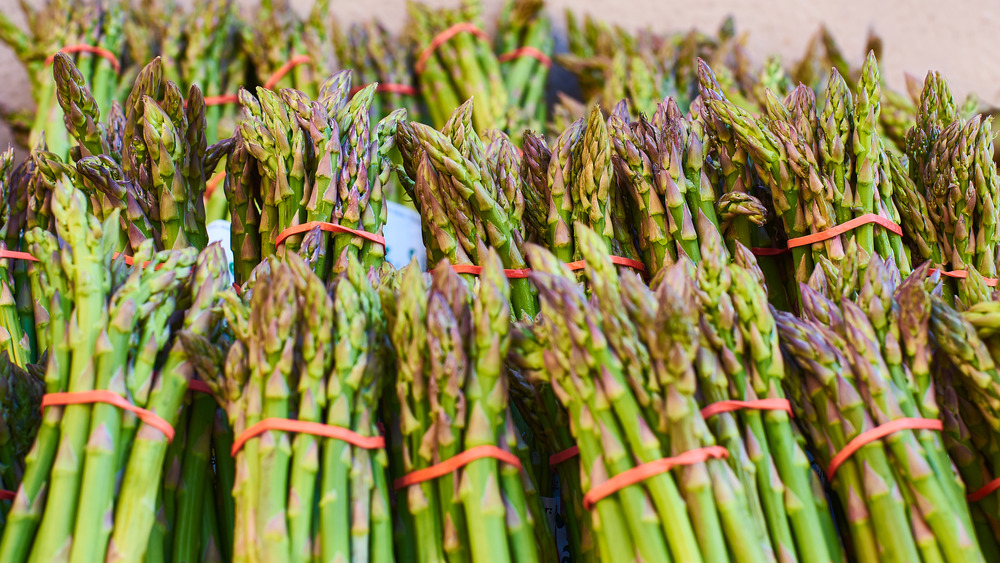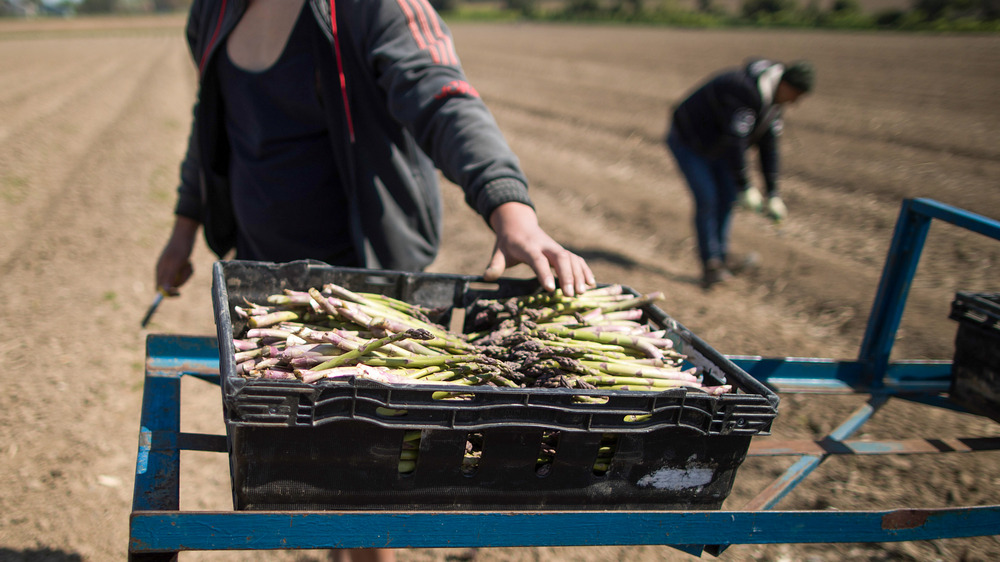The Real Reason Asparagus Is So Expensive
When spring is in full bloom, the warm weather and longer, brighter days make crunchy, fresh spring vegetables feel more appealing than ever. Whether you're a seasoned chef or a home cook just beginning to navigate the kitchen, it's hard to deny the magic that comes from delicious seasonal veggies sauteed in butter or roasted with olive oil, especially when it comes to one in particular: asparagus.
With a rich flavor, nutritional benefits, and the ability to compliment an assortment of savory dishes ranging from cheesy, herb-y tarts to baked salmon and even salads, it's possible that there isn't anything you can't pair asparagus with — though we wouldn't exactly put it on everything (via The Spruce Eats). But as delicious as these green stalks are, there is, unfortunately, no escaping the costly price tag that will quickly have you doubting your dinner choice for the evening. Why is asparagus so expensive, anyway? Well, it's complicated.
Growing asparagus is a process
Whether cooked or raw, it's easy to see why a vegetable like asparagus is so widely consumed in everything from five star courses to homemade soup. But no matter the preparation, asparagus can get pricey. The simple truth behind the costly price really comes down to a simple factor: cultivation. According to Foodiosity, the high price of asparagus comes from farmers needing to cover their costs, as it takes two to three years for the plant to grow its first crop.
Foodiosity also mentions asparagus is a labor intensive crop to harvest, and must be picked by hand. Not only that, it's also a sensitive crop that must be intensely monitored. Further adding to the price tag, World Stop Exports notes asparagus is mostly imported from countries such as Mexico and Peru, as they have the proper climates to grow the seasonal vegetable. So next time you're wondering why asparagus has such a high price, just remember it takes a lot for this tasty veggie to get all the way to your favorite grocery store.

